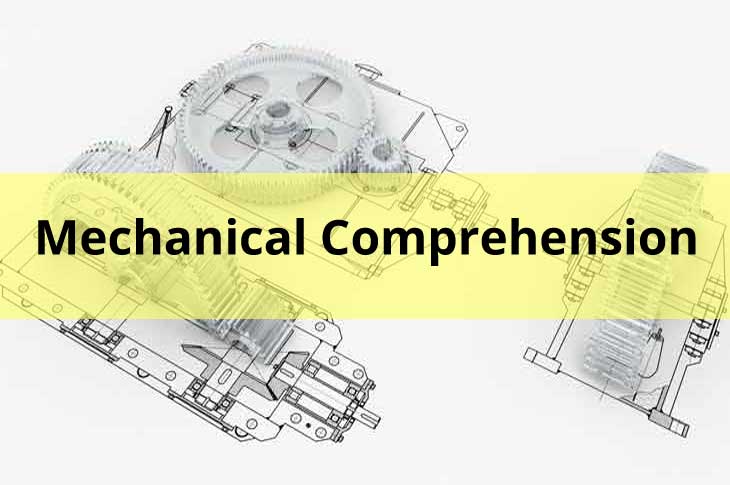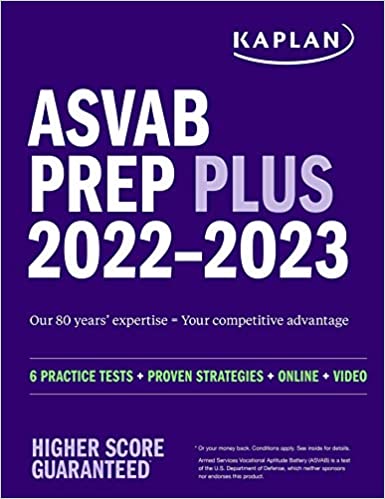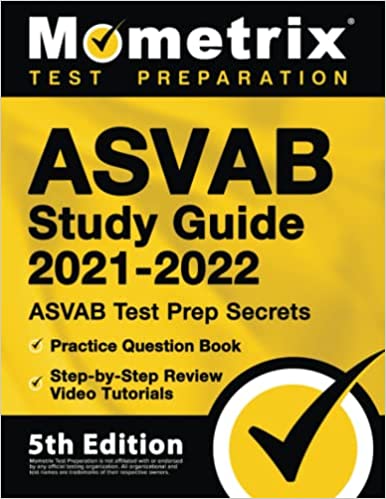
This subtest of the Armed Services Vocational Aptitude Battery is designed to gauge your understanding of simple machines and mechanisms.
On the paper version of the ASVAB, you will have 19 minutes to answer 25 questions and on the CAT-ASVAB you will have 20 minutes to answer 16 questions.
This subtest is NOT counted as part of your Armed Forces Qualification Test score. It is used to determine your qualification for certain military jobs.
The Test
The Mechanical Comprehension subtest requires a good ability to decipher machine diagrams. You’ll also need a familiarity with mechanical physics and you will need good math skills as you may be required to explain mechanical principles by solving equations based on formulas.
The Questions
The Mechanical Comprehension test covers three main areas which we’ve outlined below:
- Mechanical Devices – which includes such things as mechanical advantage, simple and compound machines, material properties and structural support.
- Mechanical Motion – which includes such things as pulleys, gears, wheels, disks, cams, cranks and pistons.
- Fluid Dynamics – which includes such things as water and air pressure, tank filling and emptying and more.
Here are some sample questions for the Mechanical Comprehension Subtest of the ASVAB:
- What is the force that is produced when two objects rub against each other?
- What is the approximate measurement of normal atmospheric pressure?
- What do torsion springs do?
What You Need to Know
As stated earlier, the Mechanical Comprehension subtest is all about mechanical systems and processes, which means there will be a lot of diagrams where you need to determine what is happening as a particular machine operates or a process is completed. For example, you may need to determine how particular gears turn or what a certain valve does.
You will also need to be able to use basic math and physics to determine mechanical system results based on common formulas.
Here are some things to brush up on before the test:
Fundamental Physics – you don’t need to go too in-depth but you should refresh your memory on some basic principles, such as the principles of action and reaction.
For example, remember Newton’s third law of motion? This law states for every action (force) in nature, there’s an equal and opposite reaction.
Another important Newton law is the law of universal gravitation which states that every object in the universe attracts every other object in the universe.
In other words, everything produces gravity and the amount of that object’s gravity depends on mass and distance. Objects that are farther apart exert less gravitational pull on each other.
You’ll also want to take a look at force (which is force = mass x acceleration), pressure, friction, gravity, equilibrium, work, energy and more.
Work? Yes, work. In this instance work refers to a force (usually measured in pounds) moving over a distance (usually measured in feet) and overcoming a resistance.
In the U.S., we most often measure mechanical work in foot-pounds. One foot-pound of work equals a 1-pound weight lifted to a height of 1 foot.
This is expressed as the following: Work = Force x Distance
We also mentioned equilibrium above, this refers to the state that exists when two or more forces interact and cancel each other out. An object at rest and in a state of equilibrium is said to be at static equilibrium – an example of this would be a bowl of water sitting on a table.
Here are some more concepts to brush up on:
- Tension
- Elastic recoil
- Overcoming resistance
- Mechanical advantage
- Using levers
- Inclined planes
- Using pulley and gear systems
- Using vises and hydraulic jacks
- And more
Test Taking Tips
Here are a few things to keep in mind when taking the Mechanical Comprehension subtest:
- The amount of force required to move an object is never more than the weight of the object (not including resistance based on friction)
- When unsure, eliminate answers that are not mechanical, in this subtest answers are more often than not mechanical in nature
- Changes produced by mechanical operations usually have both plus and minus components, so if you are unsure about an answer more often than not the correct answer will mention changes that are both positive and negative, gain and loss.
- Also, when faced with a question you don’t know the answer to try to use common sense and what you’ve observed in the world around you. Often you can derive an answer simply by determine what makes the most sense given what you know.
Preparing for the Mechanical Comprehension Subtest
This is another specialized section of the ASVAB that draws upon a person’s life experience and interests. If you have shown an interest in mechanical systems and processes during your life then this is the subtest for you. On the other hand, if Mechanical Comprehension is not something that you’ve been interested in or shown an aptitude before then you are going to have more difficulty with this section.
Keep in mind, this subtest does not count as part of your AFQT score, so if it is not required for a job you are seeking you may want to spend your time studying other important subtest categories such as the four that do make up the AFQT – Word Knowledge, Mathematics Knowledge, Arithmetic Reasoning and Paragraph Comprehension – or other subtests that directly impact your qualification for the job you want.
If you are still interested in doing well on this section, you can research Mechanical Comprehension online, visit the local library and read books on mechanical systems and processes and you can also take our practice test here on this website.
Our Mechanical Comprehension practice test contains questions on many of the most commonly tested areas on the real ASVAB. So you’ll get a better idea of what you already know and what you need to learn. You’ll also get better prepared for the experience of taking the real Mechanical Comprehension subtest.
Recommended ASVAB Study Guides
Using the right ASVAB study guide is essential to ensure the best possible outcome when preparing for the exam.




